Harold Corke, Charles E. Walker, Colin Wrigley9780127654904, 0127654909, 0127654917, 0127654925, 0127654933
Table of contents :
Encyclopedia of Grain Science Vol 1 A-F……Page 1
Relevant Websites……Page 0
EDITOR-IN-CHIEF……Page 2
EDITORS……Page 3
EDITORIAL ADVISORY BOARD……Page 4
FOREWORD……Page 5
PREFACE……Page 6
Permission Acknowledgments……Page 7
Amaranth Production and Development……Page 8
Leaves……Page 9
Amaranth Starch……Page 10
Amaranth Protein……Page 13
Amaranth Oil……Page 14
Amaranth Pigments……Page 15
Food and Feed Utilization of Amaranth……Page 16
Relevant Website……Page 17
Definition of Available Energy and the Digestive Process……Page 18
Variation in Available Energy between Grains and Animal Types……Page 19
Reasons for Differences in Available Energy between Grains……Page 21
Endosperm Cell-Wall Composition, Thickness, and Integrity……Page 22
Protein Matrix Surrounding Starch Granules……Page 24
Starch Granule Size……Page 25
Further Reading……Page 26
Relevant Websites……Page 27
Historical Perspective……Page 28
The Baking Process……Page 29
Home Baking……Page 30
The Independent “Scratch” Bakery……Page 31
Old-World Bakeries……Page 32
Further Reading……Page 33
Introduction……Page 34
Specialty Types……Page 35
Breeding Objectives……Page 36
Breeding Methods……Page 37
Molecular Mapping in Barley……Page 38
Marker-Assisted Selection……Page 39
Feed Barley……Page 40
Genetics of Malting Quality……Page 41
Breeding for Malting Quality……Page 42
Further Reading……Page 44
Growth Stages……Page 45
Plant Nutrition……Page 46
Cultivar Selection……Page 47
Sowing Date, Depth, and Rate……Page 48
Disease Control……Page 49
Weed Control……Page 51
Relevant Websites……Page 52
Shattering……Page 53
Moisture Content……Page 54
Barley……Page 55
Introduction……Page 56
Marketing……Page 57
Grain Merchandizing……Page 58
Grading to Determine Processing Potential……Page 59
Grading to Determine Overall Value……Page 60
Establishing and Analyzing Grades and Standards……Page 61
Canada……Page 62
China (Malting-Barley Imports)……Page 63
Introduction……Page 64
Composition of Barley Grain……Page 65
Barley Pearling……Page 67
Roller Milling……Page 69
Air Classification……Page 73
Other Processing……Page 74
Introduction……Page 75
Evaluation of Barley for Malting……Page 76
Steeping……Page 77
Germination……Page 78
Kilning……Page 80
Energy Efficiency……Page 82
Introduction……Page 83
Morphology of the Pods/Seeds……Page 84
Proteins……Page 87
Arcelin……Page 88
Vitamins and Minerals……Page 89
Grading, Handling, and Storage……Page 91
Further Reading……Page 92
Introduction……Page 93
Koji Production for Sake……Page 94
Rice Wine Production……Page 95
Jiuqu Production……Page 97
Daqu……Page 98
Chinese Rice Wine Making……Page 99
Chinese Distilled Liquors……Page 101
Introduction……Page 103
Historical Background……Page 104
Malting……Page 105
The Mashing Process – The Starch Degradation and Sugar Extraction Process……Page 106
Irish whiskey……Page 107
Brandies……Page 108
Fermentation……Page 109
Distilling Using Copper Pot Stills……Page 110
Distillation Using Continuous Stills……Page 111
Maturation……Page 112
Blending and Bottling……Page 113
Further Reading……Page 114
Dough-Making Processes……Page 115
Continuous Mix Process……Page 116
Sourdough Process……Page 118
Pan Breads……Page 119
Hearth Breads……Page 120
Buns and Rolls……Page 122
Flat Breads……Page 124
Future Considerations……Page 125
Relevant Websites……Page 126
Biological Aspects of Buckwheat……Page 127
Protein and Amino Acids……Page 128
Antinutritional Inhibitors……Page 129
Starch……Page 130
Therapeutic Effects of Buckwheat……Page 131
Buckwheat Food Products……Page 132
Buckwheat Processing and Development……Page 133
Further Reading……Page 134
Relevant Websites……Page 135
Principal Ingredients in Cake Batter……Page 136
Chemical and Physical Changes during Mixing……Page 138
Role of Additives……Page 139
Further Reading……Page 140
Cakes……Page 141
Leavening……Page 142
Pastries……Page 143
Laminated Doughs……Page 144
Muffins……Page 145
Bagels……Page 146
Relevant Websites……Page 147
Germplasm in Brassica……Page 148
Oil Quality……Page 149
Application of Biotechnology……Page 150
Introduction: The Three Species and Their Agro-Ecological Niches……Page 151
Crop Development and Growth: A Model Framework for Crop Management……Page 152
Crop Development in Relation to Environmental Factors……Page 153
Crop Growth in Relation to Environmental Factors……Page 154
Yield Components and the Efficient Conversion of Dry Matter to Oil Yield……Page 155
Water-Use Efficiency……Page 157
Sowing Time……Page 158
Nutrition……Page 159
Weed Management……Page 160
Further Reading……Page 161
When to Swath……Page 162
Swathing Operation……Page 163
Combining Canola……Page 164
Handling and Transport of Canola……Page 165
Conditions Necessary for Safe Storage……Page 166
Further Reading……Page 167
Introduction……Page 168
Seed Preparation……Page 169
Secondary Processing of Oil……Page 170
Bleaching……Page 171
Refining Loss……Page 172
Meal……Page 173
Relevant Websites……Page 174
Distribution in Important Grains……Page 175
Metabolism……Page 178
Sucrose……Page 179
Sugar Alcohols……Page 181
Cellulose……Page 182
Starch Breakdown……Page 183
Raffinose Oligosaccharide……Page 184
Acknowledgments……Page 185
Definition……Page 186
Epidemiology and Genetics……Page 187
Associated Diseases……Page 188
Therapy……Page 189
Toxicity of Cereal Proteins……Page 190
Toxicity of Peptides……Page 192
Further Reading……Page 193
Introduction……Page 194
Morphology of the Cereals – What They Look Like……Page 196
World Production of the Cereals……Page 197
Historical Perspective……Page 198
Wheat……Page 200
Maize (Corn)……Page 201
Rye and Triticale……Page 202
The Supply Chain of Cereal Production and Processing……Page 203
Cereal Grains and Our Health……Page 205
Further Reading……Page 207
Introduction……Page 208
Flaked cereals……Page 209
Granola cereals……Page 210
Hot Cereals……Page 211
Packaging, Storage, and Spoilage……Page 212
Introduction……Page 213
Cellulose……Page 216
Structure……Page 217
Solubility……Page 218
Gelation……Page 219
Analysis and Detection……Page 220
Structure……Page 221
Solid-State and Solution Conformations……Page 223
Solution Properties……Page 224
Gelation……Page 225
Glucomannans……Page 226
Pectic Polysaccharides……Page 227
Arabinogalactan-Proteins……Page 228
Further Reading……Page 229
Drying……Page 230
Sampling……Page 231
Discoloration……Page 232
Starch……Page 233
Sprouting (pregermination)……Page 234
Introduction……Page 235
Black Point/Kernel Smudge: Abiotic or Biotic Diseases?……Page 236
Residue-Borne Diseases……Page 237
Diseases of the Inflorescence, Spike, and Seed……Page 242
Control of Diseases by Plant Breeding……Page 243
Relevant Websites……Page 244
General Considerations……Page 245
Wheat……Page 246
Steamed Breads……Page 247
Cookies, Cakes, and Other Soft Wheat Products……Page 248
Noodles……Page 249
Pasta and Durum Wheat Products……Page 250
End-Product Tests……Page 251
Component Tests……Page 252
Intrinsic Quality of Wheat Grain and Grain Lots……Page 255
Rice……Page 256
Popcorn and “Sweetcorn”……Page 257
Sorghum and Millets……Page 258
Feed Uses of Cereals……Page 259
Further Reading……Page 260
Introduction……Page 261
What Is a Protein?……Page 262
Why Is Protein Important?……Page 263
Analysis of Protein Content……Page 264
Comparing the Proteins of Cereal Species……Page 265
The Proteins of Wheat, Rye, and Triticale……Page 266
The Proteins of the Rice Grain……Page 267
The Proteins of Maize……Page 268
Introduction……Page 269
Reproductive Biology……Page 270
Dispersal……Page 271
Wild Progenitors and Weedy Species……Page 272
Barley……Page 273
Millet……Page 274
Oats and Rye……Page 275
Sorghum……Page 276
Wheat……Page 277
Minor Cereals……Page 278
Relevant Websites……Page 279
Introduction……Page 280
Nitrogen……Page 281
Herbicides……Page 282
Stored-Product Protection……Page 283
Grain protectants……Page 284
Further Reading……Page 285
Relevant Websites……Page 286
Biology……Page 287
Production……Page 288
West Asia, North Africa, and Southern Europe……Page 289
Drought……Page 290
Fusarium wilt……Page 291
Nutritional Status……Page 292
Uses and Processing……Page 293
Introduction……Page 294
Soil Type and Land Preparation……Page 295
Time of Sowing……Page 296
Sowing Rate, Depth, and Method……Page 297
Other Nutrient Requirements……Page 298
Disease and Pest Management……Page 299
Harvesting and Storage……Page 300
Further Reading……Page 301
Vertical Spindle Mixers……Page 302
Continuous Mixers……Page 303
Sheeting and Cutting……Page 304
Extrusion……Page 305
Further Reading……Page 306
The Main Features of Wafers……Page 307
Wafer Sheet Baking……Page 308
Moisture sorption and wafer texture……Page 309
Recent Developments in Molded Wafer Cones……Page 310
Cone Sleeving and Stacking……Page 311
Trends – From the Very Wafer to a More Sophisticated End Product……Page 312
Further Reading……Page 313
Characteristics of the Biscuit Family of Products……Page 314
Shortenings and Emulsifiers……Page 316
Other Ingredients……Page 317
Chemical changes……Page 318
Further Reading……Page 319
Historical Origins……Page 320
Types of Crackers……Page 321
Cookies and Biscuits Made from Short Doughs……Page 322
Decorating Biscuits and Cookies……Page 323
Vegetative Organization……Page 324
Biochemistry……Page 325
Molecular Biology……Page 326
Folk Medicine……Page 327
Further Reading……Page 328
Data for Consumption of Grain-Based Foods……Page 329
Women in the labor force……Page 334
Food marketplace trends……Page 335
Globalization Trends……Page 336
Relevant Website……Page 337
Plant Material from the Grain Crop……Page 338
Defective Grains……Page 341
Infected Grains……Page 342
Weed Seeds……Page 343
Animals and Animal Products……Page 344
Inanimate Materials……Page 345
GM Grain……Page 346
Sieving……Page 347
Farm Management……Page 348
Further Reading……Page 349
Introduction……Page 350
Glandless Cottonseed……Page 351
Processing and Products……Page 352
Foods Uses……Page 353
Feed Uses……Page 354
Relevant Websites……Page 355
Cultural Differences in Processing and Consumption – Protein……Page 356
Fiber……Page 357
Cultural Differences in Processing and Consumption – Toxic Components……Page 358
Wheat and Its Parent Grains……Page 359
Oats……Page 360
Conclusions……Page 361
Relevant Websites……Page 362
Cell Walls in Cereal Endosperm……Page 363
Enzymic Hydrolysis of Wall Polysaccharides in Germinated Grain……Page 364
Kilning……Page 365
a-Amylases in Developing and Ripe Wheat Grains and their Impact on Processing……Page 366
Polyphenol Oxidase……Page 368
Enzymes that are Active in Ripe, Quiescent Grains……Page 369
Future Prospects……Page 370
Further Reading……Page 371
Introduction……Page 372
The Screw Design……Page 373
The Transformation of Biopolymers……Page 374
Animal Feedstuffs……Page 375
Breadings and Coatings……Page 376
Further Reading……Page 377
The Beginnings of Food Fermentation……Page 378
An Example……Page 379
Physical and Chemical Properties of Raw Materials for Fermentations……Page 380
Leafy material……Page 381
Roots, Bulbs, and Tubers……Page 382
Seeds……Page 383
The Future for Traditional Fermentation Processes……Page 384
Introduction……Page 385
Factors Affecting Fermentation……Page 386
Nutritional Implications……Page 387
Flour/Meal……Page 388
Pancakes……Page 390
Dumplings……Page 391
Thin Porridges……Page 392
Beverages……Page 393
Potential for Development……Page 394
Introduction……Page 395
Food-Safety Hazards in Grain Production and Processing……Page 396
Biological Hazards……Page 397
Physical Hazards……Page 399
Risk Assessment……Page 400
Risk Management and Risk Communication……Page 401
Conclusion……Page 402
Relevant Websites……Page 403
Criteria for Food Fortification……Page 404
Cereal-Based Products as Vehicles of Minerals and Vitamins……Page 405
Rice Fortification……Page 406
Compounds Used as a Source of Vitamins and Minerals……Page 407
Legislation Concerning Cereal Fortification……Page 408
Relevant Websites……Page 410
US Ethanol Production……Page 411
The Fuel Ethanol Industry……Page 412
Feedstocks……Page 413
Fermentation Processes……Page 414
Biomass Fermentation……Page 415
Pentose Sugar Fermentation……Page 416
Monitoring Progress of Fermentation……Page 417
Anhydrous Ethanol Production……Page 418
Relevant Websites……Page 419
Developing Nations……Page 421
Africa……Page 422
European Nations……Page 423
North American Nations……Page 424
Perception of Benefit……Page 425
Economics/Concentration of Power/SES……Page 426
Introduction……Page 427
Molecular Basis of DNA Markers……Page 428
Methods of Visualizing DNA Markers……Page 429
Genetic Linkage Mapping……Page 430
Physical Mapping……Page 431
Aneuploid Mapping……Page 432
Large-Insert Clone Contigs……Page 433
Future Mapping Prospects……Page 434
Introduction……Page 436
Genome Analysis……Page 437
Transcript Analysis……Page 439
Proteome Analysis……Page 441
Functional Analysis Systems……Page 442
Economic, Social, and Environmental Benefits……Page 443
Relevant Websites……Page 444
Composition of Gluten……Page 445
Other Processes……Page 446
Properties of Gluten……Page 447
Other Uses……Page 448
The Future for Gluten……Page 449
Wheat Grain Morphology and Its Effect on Dry and Wet Milling……Page 450
Bran……Page 451
Embryo (Germ)……Page 452
Grain Structure……Page 453
Rice Endosperm……Page 454
Wet Milling……Page 455
Further Reading……Page 457
Historical Background……Page 458
Tests for DUS……Page 460
Ear Emergence……Page 462
The Morphology of the Ear……Page 463
Morphology of the Grain……Page 464
The Future……Page 465
Introduction……Page 466
Grouping Grain Crops into Hierarchical Categories……Page 469
The Species Concept and Grain Crops……Page 470
The Grasses……Page 471
The millets and tef……Page 472
Oil-Seed Crops and Pseudocereals……Page 473
Relevant Websites……Page 474
Introduction……Page 475
Dietary Fiber……Page 476
Dicot Arabinoxylans……Page 477
Reserve Polysaccharides……Page 478
Galactomannans……Page 479
Relevant Websites……Page 480
World Grain Production of Cereals, Oilseeds, Pulses……Page 481
Wheat……Page 483
Rice……Page 486
Barley……Page 487
Rye, triticale, buckwheat, fonio, quinoa, canary seed, and tef……Page 488
Soybean……Page 489
Introduction……Page 490
Grain Agriculture……Page 491
Grains Produced……Page 492
Consumption……Page 494
Challenges and Opportunities……Page 495
Introduction……Page 497
Production Statistics……Page 498
The Green Revolution……Page 502
Money, Meat, and Grain……Page 503
The Future……Page 505
Cereals……Page 506
Rye……Page 509
Consumption of Cereals……Page 510
Consumption of Pulses and Oilseeds……Page 513
Introduction……Page 514
Production……Page 515
Production……Page 516
Area Harvested……Page 517
Area Harvested……Page 518
Area Harvested……Page 519
Area Harvested……Page 520
Disposition and Consumption……Page 521
Data Tables……Page 522
Introduction……Page 526
Disposition and Consumption……Page 527
Production……Page 528
Area Harvested……Page 529
Area Harvested……Page 530
Disposition and Consumption……Page 531
Data Tables……Page 532
Historical Perspective……Page 536
Diversification of Markets for Australian Grains……Page 537
Wheat……Page 539
Rice……Page 542
Triticale……Page 543
New Zealand……Page 544
Introduction……Page 545
Argentina……Page 546
Brazil……Page 549
Peru……Page 551
Relevant Websites……Page 552
Food Labels……Page 554
The Nutrition Label……Page 555
Nutrient Content, Health, and Structure-Function Claims……Page 556
Organic Labeling……Page 557
Labeling of GM Grain……Page 558
Labeling Issues Specific to Milled or Processed Grain……Page 559
Relevant Websites……Page 560
Origin and Domestication……Page 561
Constraints of Production Addressable by Breeding……Page 562
Recent Trends in Lentil Production……Page 563
Major Agro-Ecology and Breeding Objectives……Page 564
Understanding of Genetic Control……Page 565
Evolution of National and International Breeding Programs……Page 566
Varietal Releases by National Programs……Page 567
Further Reading……Page 568
Adaptation and Land Requirement……Page 569
Seeding Rates……Page 570
Time of Seeding……Page 571
Fertilizer Requirements……Page 572
Weed Management……Page 573
Diseases……Page 574
Further Reading……Page 575
Introduction……Page 576
Cereal Grains……Page 577
Oilseeds……Page 579
Extraction and Quantification of Lipids……Page 580
Thin Layer Chromatography……Page 581
Gas chromatography……Page 582
The Role of Lipids in Cereal Technology……Page 583
Relevant Websites……Page 584
Grain Morphology and Composition……Page 585
Fractionation……Page 589
Flour Additive……Page 590
Ruminants……Page 591
Further Reading……Page 592
General Aspects of Lupin Breeding……Page 593
Resistance to Stress and Diseases……Page 594
Nutritive Value……Page 595
Protein……Page 596
Carbohydrates……Page 597
Bioactive Compounds……Page 598
Saponins……Page 599
The Potential of Lupin……Page 600
Introduction……Page 601
Which Species?……Page 602
Sowing Time……Page 603
Row Spacing and Seed Depth……Page 604
Potassium (K) and sulfur (S)……Page 605
Weed Management……Page 606
Virus diseases……Page 607
Harvesting……Page 608
Relevant Websites……Page 609
Origin of Maize……Page 610
Cytogenetics……Page 613
Transposable Elements……Page 615
Mutants of Maize……Page 616
Mutants Affecting Kernel Properties……Page 617
Mutants Affecting Pigmentation(Kernel and Plant)……Page 619
Mutants Affecting Plant Form……Page 620
Mutants Affecting Fertilization……Page 621
Maize Genetics Resources……Page 622
Breeding……Page 623
Germplasm……Page 624
Pedigree Breeding: The Inbred-Hybrid Concept……Page 625
Population Improvement……Page 627
Production of Commercial Hybrid Maize Seed……Page 629
Relevant Websites……Page 630
Historical Background……Page 631
Genetic and Biochemical Basis……Page 632
Nutritional and Process Values……Page 633
Future Prospects……Page 634
Introduction……Page 635
Process Overview……Page 636
Kernel to Kernel Shear (Beall Type)……Page 638
Impact……Page 639
Products and Uses……Page 640
Impact of Maize Quality and Kernel Characteristics……Page 641
Further Reading……Page 643
The Maize Kernel……Page 644
Steeping……Page 645
Lactic acid-dominated stage……Page 647
Germ Recovery……Page 648
Fiber Recovery……Page 650
Protein Recovery……Page 651
Water Flow and Mass Balance……Page 653
Kernel Composition……Page 654
Test Weight……Page 656
Mechanical Damage……Page 657
High Amylose……Page 658
Genetically Modified……Page 659
Relevant Websites……Page 660
Food Uses of Specialty Corns……Page 661
Corn Syrups……Page 663
Maltose syrups……Page 666
High-fructose corn syrups……Page 667
Food Uses of Dry-Milled Fractions……Page 668
Corn grits……Page 669
Table tortillas……Page 670
Further Reading……Page 671
Production and Agronomic Issues……Page 672
Chemical Composition and Nutritional Value……Page 673
Carbohydrates……Page 674
Antinutrients……Page 675
Steeping……Page 676
Porridge……Page 677
Opaque beer……Page 678
Future Prospects and Challenges……Page 679
Millet Importance and Production Areas……Page 680
Pearl Millet……Page 681
Millet Uses……Page 682
Millet Processing and Development……Page 684
Further Reading……Page 686
Flour Milling……Page 687
High Grinding – Gradual Reduction……Page 688
Roller Mills……Page 689
Grain Cleaning……Page 690
Ovens……Page 691
Food Being Baked……Page 692
Further Reading……Page 693
Relevant Websites……Page 694
The Nitrogen Cycle……Page 695
Nitrogen Sources……Page 697
Nitrogen Fixation……Page 698
Uptake……Page 699
Assimilation of Nitrogen……Page 701
Nitrogen Storage……Page 702
Nitrogen and Environmental Health……Page 703
Relevant Websites……Page 704
Nitrogen Nutrition of Developing Seeds……Page 705
Transport of N-Solutes within Seeds……Page 707
Primary N Metabolism……Page 708
Synthesis of Stored N Reserves in Seeds……Page 709
Relevant Websites……Page 710
Types of Asian Starch Noodles……Page 711
Substrates Used for Starch Noodles……Page 714
Partial Gelatinization of Moist Starch……Page 715
Full Gelatinization of Shaped Dough……Page 716
Retrogradation……Page 717
Nutritional Benefits……Page 720
Further Reading……Page 721
Mixing……Page 722
Initial sheeting and combining……Page 724
Boiled noodles……Page 725
Flour attributes and noodle appearance……Page 726
Flour and noodle texture……Page 727
Effects of Other Ingredients……Page 728
Further Reading……Page 729
Background……Page 730
Starch……Page 731
Oil……Page 732
Phytosterols and Phytostanols……Page 733
Anthocyanins……Page 734
Further Reading……Page 735
Introduction……Page 736
The Concept of a Vitamin……Page 737
The Analysis of Foods……Page 738
Rice and Other Staples……Page 739
The Improvement of Rice……Page 740
Heat-Stable Antithiamins?……Page 741
Alcoholism……Page 742
Common and Diverse Features of Dietary Guideline Diagrams……Page 743
Quantitative Recommendations……Page 744
Relevant Websites……Page 745
Maillard Browning……Page 746
Formation and Biological Effects of Acrylamide……Page 748
Ascorbate Browning……Page 750
General Aspects……Page 751
Racemization of L-Amino Acids to D-Isomers……Page 752
Lysinoalanine and Related Amino Acids……Page 754
Lysine and Derivatives……Page 755
Methionine and Derivatives……Page 756
Conclusions……Page 757
Characteristics of Minerals……Page 758
Grain Structure and Location of Minerals……Page 759
Mineral Composition of Grain-Based Foods……Page 760
Minerals in whole rye, barley, and brown rice……Page 761
Minerals in cooked brown and white rice……Page 762
Cakes, Pastries, and Other Desserts……Page 763
Minerals in beer……Page 764
Further Reading……Page 765
Minerals……Page 766
Phytic acid……Page 767
Role of Soy in the Diet……Page 768
Soy and Coronary Heart Disease……Page 769
Soy and Cancer……Page 770
Soy and Menopausal Symptoms……Page 771
Introduction……Page 772
Characteristics of Vitamins……Page 773
Grain-Processing Effects on Vitamins……Page 774
Grains, Flours, and Cooked Cereals……Page 775
Vitamins in whole wheat……Page 776
Vitamins in pasta……Page 777
Vitamins in whole wheat and rye crackers……Page 778
Vitamins in meat substitutes……Page 779
Further Reading……Page 780
Relevant Websites……Page 781
Introduction……Page 782
Domestication and Early Cultivation……Page 783
Plant Growth and Morphology……Page 784
Diseases Caused by Fungi……Page 786
Nematodes……Page 787
Processing Oats……Page 788
Oats for Feed Grain……Page 789
Oats for Fodder……Page 790
Further Reading……Page 791
Rice Oil……Page 792
Corn Oil……Page 793
Corn Oil……Page 794
Quality Factors……Page 795
Further Reading……Page 796
Oilseeds and Their Uses……Page 797
Soybean Seed……Page 798
Rapeseed……Page 799
Safflower……Page 800
Rapeseed……Page 801
Further Reading……Page 802
Definition……Page 803
Food Processing Issues……Page 804
Potential Advantages……Page 806
Potential Limits……Page 811
Further Reading……Page 812
Scale (Includes Cost, Size, and Capacity)……Page 813
Thermal Radiation……Page 814
Convection……Page 815
Traveling Tray Bread Ovens……Page 817
Rotary Rack Ovens……Page 818
Impingement Ovens……Page 819
Vertical folded path……Page 820
Microwave baking……Page 821
Hybrid Oven Designs……Page 822
Further Reading……Page 823
Relevant Websites……Page 824
World Production and Consumption of Pasta……Page 825
For Wheat Grain……Page 826
For Semolina……Page 827
Water……Page 828
Extrusion……Page 829
Drying……Page 830
Assessment of Pasta Quality……Page 832
Further Reading……Page 833
Introduction……Page 834
The Plant……Page 835
Nutritional Value, Processing, and Utilization……Page 836
Genetic Improvement……Page 838
Somatic Embryogenesis……Page 840
Double Haploid Production……Page 841
Further Reading……Page 842
Farming System Benefits of Pea……Page 843
Rainfall……Page 844
Cultivar Choice……Page 845
Sowing Management……Page 846
Nitrogen (N)……Page 847
Potassium (K) and sulfur (S)……Page 848
Disease Management……Page 849
Ascochyta/Mycosphaerella blight or black spot……Page 850
Harvesting……Page 851
Further Reading……Page 852
Relevant Websites……Page 853
Production and Yields……Page 854
Trade……Page 855
Fungal Pests……Page 856
Nutritional Constraints……Page 857
Aflatoxin……Page 858
Anaphylaxis……Page 859
Relevant Websites……Page 860
Types of Foods……Page 861
Extrusion Cooking Technology……Page 862
Extrusion machinery – preconditioning……Page 863
Formation of Meat Chunks – Thermal Gelling of Starch……Page 864
Further Reading……Page 865
Importance of Diseases and Pests……Page 866
Healthy Plants……Page 867
Vulnerable Stages in Plant Growth……Page 868
Fungal Diseases……Page 869
Bacterial Diseases……Page 870
Stylet borne……Page 871
Birds and Mammals……Page 872
Resistance……Page 873
Further Reading……Page 874
Value-Added Fractionation of Whole Grain Crops……Page 875
The Botanical, Chemical Composition, and Productivity of Grain Crops……Page 876
Products from Whole Plant Fractions……Page 877
Whole Plant Utilization Production Systems – Integrated Plant Conversion in Biorefineries……Page 878
Economy……Page 880
Further Reading……Page 881
Introduction……Page 882
Structures of 7S and 11S globulins……Page 883
Albumins……Page 885
Storage Proteins of Legumes……Page 886
Storage Proteins of Pseudocereals……Page 887
Introduction……Page 888
Synthesis, Folding, Processing, and Deposition of Seed Storage Protein……Page 889
Synthesis, Folding, and Disulfide Bond Formation Occur Simultaneously on the ER……Page 890
Storage Albumins and Globulins Are Deposited in Storage Vacuoles……Page 891
Organization of Storage Proteins in Protein Bodies……Page 892
Tissue Specificity……Page 893
Environmental Control……Page 894
Further Reading……Page 895
Background to Proteomics……Page 896
Preparing Samples for Two-Dimensional Electrophoresis……Page 897
Two-Dimensional Gel Electrophoresis……Page 898
Characterization and Identification of Protein Spots……Page 899
Relationship between Proteome and Transcriptome Results……Page 900
Characterization of Wheat Endosperm Proteins during Development and Maturity……Page 901
Identification of Endosperm Proteins Associated with Heat Tolerance……Page 902
Future Prospects……Page 903
Definition……Page 904
Amaranthus caudatus, A. cruentus, A. hypochondriacus (grain amaranth)……Page 905
Potential pseudocereals in the Chenopodiaceae family……Page 906
Cactaceae……Page 907
Marantaceae……Page 908
Relevant Websites……Page 909
Introduction……Page 910
Consumption……Page 911
Composition……Page 912
Protein Complementation……Page 913
Antinutritional Factors……Page 914
Agronomy……Page 915
Relevant Websites……Page 917
Origin and Distribution……Page 918
Cultivation Practices……Page 919
Morphology of the Plant……Page 920
Protein……Page 921
Nutritional disadvantages……Page 922
Uses……Page 923
Further Reading……Page 924
Relevant Websites……Page 925
Introduction……Page 926
USA……Page 927
Canada……Page 928
Western Europe……Page 930
Relevant Websites……Page 933
The International Agricultural Research™Centers……Page 934
Asia Pacific……Page 935
Central and South America……Page 940
Africa and the Middle East……Page 941
Relevant Websites……Page 942
Current and Future Challenges……Page 943
Mobilizing Grain Science for Development……Page 944
Evolving Research Agenda, Steadfast Focus on Fundamentals……Page 945
Wheat……Page 947
Rice improvement in Africa……Page 948
Regional impact……Page 949
Conserving Biodiversity……Page 950
Back to the Future……Page 951
Further Reading……Page 952
Grain Processing Companies……Page 953
Seed and Grain Biotechnology Companies……Page 954
Increased Planning and Collaboration……Page 955
Changes in Research Subject Matter……Page 956
Institutional Trends……Page 957
Global Distribution, Varieties, and Commercial Importance……Page 958
Handling, Grading, and Storage……Page 959
Chemical and Nutritional Composition……Page 960
Food Uses……Page 962
Further Reading……Page 964
Introduction……Page 965
Molecular Dissection of Quantitative Traits……Page 966
Comparative Genomic Mapping……Page 967
Progress in Rice Genetics……Page 968
Heading date……Page 969
Resistance to disease……Page 970
Tolerance to adverse soils……Page 975
Marker-Assisted Selection……Page 976
Relevant Websites……Page 977
Breeding for High Yield and Wide Adaptability……Page 978
Breeding for Grain Quality and Improved Nutrition……Page 979
Breeding for Overcoming Stress Factors……Page 980
Exploitation of Heterosis……Page 981
Cross-Breeding……Page 982
Tissue Culture……Page 983
Marker-Assisted Selection……Page 984
Introduction……Page 985
Rice Starch……Page 986
Guo-Ba……Page 987
Bi-Tai-Ba……Page 989
Further Reading……Page 990
Introduction……Page 991
Wildrice Species……Page 992
Zizania palustris L…….Page 993
History of Cultivation/Domestication……Page 995
Genetics and Breeding……Page 996
Processing……Page 998
Nutritional Properties……Page 999
Markets and Uses……Page 1000
Further Reading……Page 1001
Botanical Classification……Page 1002
Proximate Composition and Nutritional Properties of Rye Grain……Page 1003
Genetics, Plant Breeding, and Agronomy……Page 1004
Grading Rye Grain and Primary Processing……Page 1006
Uses of Rye……Page 1007
Relevant Websites……Page 1008
The Range of Societies……Page 1009
AACC Resources……Page 1010
ICC Organization and Activities……Page 1011
The American Societies of Agronomy, Crop, and Soil Science……Page 1012
Further Reading……Page 1013
Snack Consumption Patterns……Page 1014
Types of Snack Foods……Page 1015
Corn and Tortilla Chips……Page 1017
Common ingredients used for extruded snacks……Page 1018
Cereal sources……Page 1019
Fried collets……Page 1021
Co-Extruded Snacks……Page 1022
Introduction……Page 1024
Characteristics, Morphology, and Phenology……Page 1025
Conventional Approaches/Classical Breeding……Page 1026
Germplasm Assemblage and Utilization……Page 1027
The Selection and Testing Process……Page 1029
Population Improvement and Recurrent Selection……Page 1030
Farmer Participatory Breeding……Page 1031
Agronomy and Protection Breeding……Page 1032
Breeding Sorghum for Specific End Uses……Page 1033
Harvesting of Sorghum……Page 1035
Drying, Threshing, and Cleaning of Sorghum Grain……Page 1036
Storage of Grain……Page 1037
Storage Structures……Page 1038
Storage Pests……Page 1039
Selection of a Storage Structure……Page 1040
Future Prospects……Page 1041
Introduction……Page 1042
Grain Structure and Physical Properties……Page 1043
Starch……Page 1045
Enzymes……Page 1046
Food Uses……Page 1047
Malting Sorghum and Brewing……Page 1049
Nutritional Value……Page 1050
Further Reading……Page 1051
Origin……Page 1052
Germplasm Utilization……Page 1053
Germplasm Utilization (North America) – G. max……Page 1055
Breeding Objectives……Page 1057
Breeding Methodology……Page 1058
Hybrid Soybean……Page 1059
Molecular Genetics……Page 1060
Further Reading……Page 1061
Planting Options……Page 1062
Pest Management……Page 1063
Increasing Water Use for Transpiration……Page 1064
Increasing Harvest Index……Page 1066
Nitrogen Nutrition and Drought Response……Page 1067
Accumulation of Seed Components……Page 1068
Temperature during Seed Filling……Page 1069
Management Factors……Page 1070
Introduction……Page 1071
Proteins……Page 1072
Methods to Measure Composition……Page 1073
Grading Standards……Page 1074
Processing……Page 1075
Fatty Acid Composition……Page 1076
Refining of Soybean Oil……Page 1077
Hydrogenation……Page 1079
Crystallization and Fractionation……Page 1080
Soap Stock……Page 1081
Oxidative Quality of Soybean Oil……Page 1082
Mayonnaise and Salad Dressing……Page 1083
Introduction……Page 1084
Proximate Compositions……Page 1085
Essential Amino-Acid Contents……Page 1086
Health Benefits of Soy Proteins……Page 1087
Fat Binding……Page 1088
Specialty Soy-Protein Foods and Ingredients……Page 1089
Introduction……Page 1090
Tempeh……Page 1091
Salted Black Beans or Soy Nuggets……Page 1092
Mold stage……Page 1093
Soymilk Yogurt……Page 1094
Soy Sauce……Page 1095
Koji production……Page 1096
Moromi stage……Page 1097
Miso……Page 1098
Tempeh……Page 1099
Further Reading……Page 1100
Soymilk Production……Page 1101
Tofu……Page 1104
Soymilk- and Tofu-Based Foods……Page 1106
Okara Composition……Page 1107
Okara fiber component……Page 1108
Fermentation for Nonfood Products……Page 1109
Further Reading……Page 1110
Introduction……Page 1111
Composition and Properties……Page 1112
Starch Used in Paper Production……Page 1113
New and Future Uses of Starch……Page 1115
Food Uses of Starches……Page 1117
Introduction……Page 1118
Methods used in amylose estimation……Page 1119
Amylopectin……Page 1120
Gelatinization……Page 1121
Methods in the analysis of starch gelatinization……Page 1122
Measurement of pasting properties……Page 1123
Swelling and Solubility……Page 1124
Differential scanning calorimetry……Page 1125
X-ray analysis……Page 1126
Further Reading……Page 1127
The Monomer and Linkages……Page 1128
Starch Polymer Types……Page 1129
Levels of Organization……Page 1131
Starch-Bound Proteins……Page 1132
Dissociation Chemistry……Page 1133
Mutant Starches……Page 1134
Modification……Page 1135
Methods of Production and Applications……Page 1136
Stabilization……Page 1137
Pregelatinization……Page 1138
Relevant Website……Page 1139
Starch from Different Cereals……Page 1140
Pathway Preceding Starch Biosynthesis……Page 1141
ADPG Pyrophosphorylase……Page 1142
Starch Branching Enzymes……Page 1144
Other Enzymes with Potential Roles in Synthesis……Page 1145
Future Work……Page 1146
Further Reading……Page 1147
Introduction……Page 1148
Types of Storage Needed at All Stages of Handling……Page 1149
Monitoring Moisture during Storage……Page 1150
Natural Drying Methods……Page 1151
The Future……Page 1152
Grain Invertebrates……Page 1153
Biomass Consumption……Page 1154
Collateral Problems of Control……Page 1155
Inspection……Page 1156
Gaseous Phosphine……Page 1157
Future Prospects……Page 1158
Relevant Websites……Page 1159
Chemical Insecticides……Page 1160
Safety use considerations……Page 1162
Effect of temperature on insects……Page 1163
Heat disinfestation……Page 1164
Controlled Atmospheres……Page 1165
Mechanical Impact, Turning, and Pneumatic Conveying……Page 1166
Decontamination Methods……Page 1167
The Potentialities of Computer-Aided Decision Systems……Page 1168
Further Reading……Page 1169
Introduction……Page 1170
Grain Cleaning……Page 1171
Moisture Content and Allowable Safe Storage Times……Page 1172
The Main Objectives of Drying……Page 1174
In-Bin Grain Drying in Practice……Page 1175
Preliminary Considerations……Page 1176
Practical Implementation of Cooling Aeration……Page 1177
Future Prospects……Page 1178
Relevant Websites……Page 1179
History……Page 1180
Production Practices in North America……Page 1181
Birds……Page 1183
Hulls……Page 1184
Further Reading……Page 1185
Relevant Websites……Page 1186
Taxonomy – A System of Names to Avoid Confusion……Page 1187
Taxonomy – A System of Relationships……Page 1188
The Use of Genus and Species Names……Page 1190
Taxonomy – Rank and Hierarchy……Page 1191
Cultivated Plant Taxonomy……Page 1194
Future Trends in Taxonomy……Page 1195
Relevant Websites……Page 1196
Cultivation and Production……Page 1197
Harvesting and Storage……Page 1198
Pericarp……Page 1199
Carbohydrate……Page 1200
Ash and minerals……Page 1202
Usage……Page 1203
Fermentation……Page 1204
Prospects, Problems, and Recommendations……Page 1205
Introduction……Page 1206
Wheat Flour Tortillas……Page 1207
Table Tortillas from Maize……Page 1209
Fried/Snack Products……Page 1211
Chemistry of Nixtamalization (Alkaline Cooking)……Page 1212
Nutritional Value……Page 1213
Introduction……Page 1214
Origin and Types……Page 1215
Adaptation and Production……Page 1216
Usage……Page 1217
Future Prospects……Page 1218
Further Reading……Page 1219
Historical Background……Page 1220
Plant Breeders’ Rights Requirements……Page 1221
The Phenol Test……Page 1222
Gel Electrophoresis……Page 1223
SDS gel electrophoresis……Page 1224
Mass Spectrometry (MS)……Page 1225
Clarification of the Aim of Identification……Page 1226
Grain Sampling and Statistics……Page 1227
Relevant Websites……Page 1228
Historical Background……Page 1229
PBR – Background and the Role of UPOV……Page 1230
Variety Registration and PBR Schemes in the European Union……Page 1232
PBR Schemes in North America……Page 1233
Advantages and Difficulties with Present PBR Systems……Page 1234
Further Reading……Page 1235
Relevant Websites……Page 1236
Taxonomy of Wheat and Its Relatives……Page 1237
Gene Location by Monosomic Analysis……Page 1238
Telocentric Chromosomes……Page 1239
Interspecific Crosses and Gene Transfer……Page 1240
Wheat Genetics……Page 1241
The Genetics of Stress Resistance……Page 1242
Relevant Websites……Page 1243
Working at the Phenotype Level……Page 1244
Biological Component……Page 1245
Role of Germplasm Collections for New Trait Discovery……Page 1246
Factors Influencing the Sequence of Trait Selection and Choice of Breeding Method……Page 1247
Emerging and Enabling Technologies……Page 1248
Relevant Websites……Page 1250
Classes of Wheat……Page 1251
Soil Factors……Page 1252
Varieties and Seeds……Page 1253
Planting……Page 1254
Irrigation……Page 1255
Asia……Page 1256
North America……Page 1257
Oceania……Page 1258
Eastern Europe and Western Asia……Page 1259
Western Europe……Page 1260
Introduction……Page 1261
Historical Perspective……Page 1262
Meeting Appropriate Grain-Quality Standards……Page 1263
Testing to Ensure Grain-Quality Standards……Page 1264
Quality Specifications of Individual Countries……Page 1265
Transportation of Grain……Page 1266
Storage……Page 1267
Future Prospects……Page 1268
The Quality Feedback Chain……Page 1269
Testing Grain Quality……Page 1270
USA……Page 1271
Australia……Page 1272
USA……Page 1274
Europe……Page 1275
Further Reading……Page 1276
Historical Background……Page 1277
Structure and Composition of the Wheat Kernel and Flour……Page 1278
Wheat Cleaning……Page 1279
Mill Equipment……Page 1281
Hard Common Wheat Milling……Page 1283
Divide Milling……Page 1284
Milling By-Products……Page 1285
De-Branning (Preprocessing)……Page 1286
Relevant Websites……Page 1288
Global Wheat Production and Trade……Page 1289
Marketing Overview……Page 1290
United States……Page 1291
Canada……Page 1292
Australia……Page 1294
Argentina……Page 1295
Conclusion……Page 1296
Introduction……Page 1297
Starch Particle Size Distribution/B Starch……Page 1298
Pentosans……Page 1299
The Modified Martin Process……Page 1300
Westfalia Three-Phase Process or Tricanter Process……Page 1301
Wheat Flour Characteristics……Page 1303
Further Reading……Page 1304
The Bran……Page 1305
The Endosperm……Page 1308
Light Microscopy……Page 1309
Scanning Electron Microscopy (SEM)……Page 1310
Flour Milling……Page 1311
Conclusion……Page 1313
Introduction……Page 1314
Descriptive Rheological Measurements……Page 1315
Recording Dough Mixers……Page 1316
Extensional Instruments……Page 1319
Fundamental Rheological Tests……Page 1320
Dynamic oscillation measurements……Page 1321
Creep and relaxation measurements……Page 1324
Baking Quality and Rheology……Page 1325
Proof and Baking……Page 1327
Summary……Page 1328
Further Reading……Page 1329
Historical Perspective……Page 1330
Why Is Protein Important?……Page 1331
Why Are Growth Conditions Important?……Page 1332
Determination of Protein Quality versus Quantity……Page 1333
The Gliadin Proteins……Page 1334
The Glutenin Proteins – Polymers of Polypeptides……Page 1335
Relevant Websites……Page 1337
Historical Perspective……Page 1338
Health Claims in the USA……Page 1339
Compositional Differences between the Grain Components……Page 1340
Strengths of the Whole-Grain Health Claims……Page 1341
Conclusions……Page 1342
Relevant Websites……Page 1343
Relevant Websites……Page 1344
Use of this List……Page 1361
Relevant Websites……Page 1369
Commercial Websites……Page 1370
Method Development……Page 1373
Chemical Composition……Page 1374
Conclusion……Page 1383
Relevant Websites……Page 1384
Historical Perspective – The Metric System……Page 1385
The International System (SI) of Units……Page 1386
Units of Grain Harvesting……Page 1387
Units for Cereal Chemistry Testing……Page 1388
Resistance Units and the Mixograph……Page 1389
Conclusion……Page 1390
Further Reading……Page 1391
Relevant Websites……Page 1392
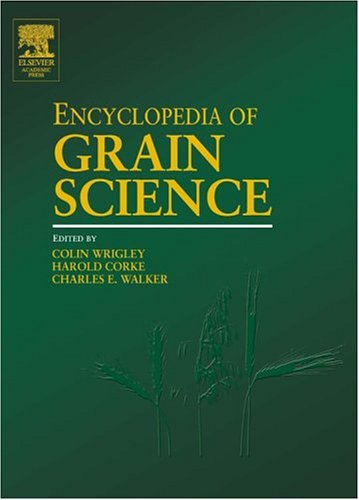
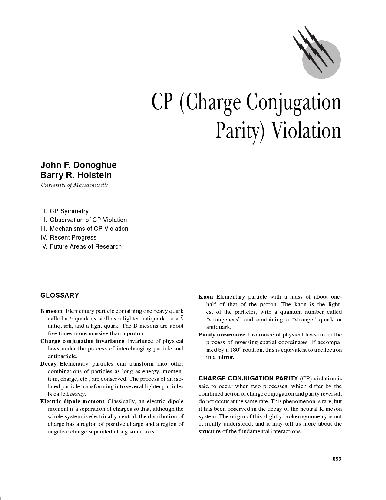
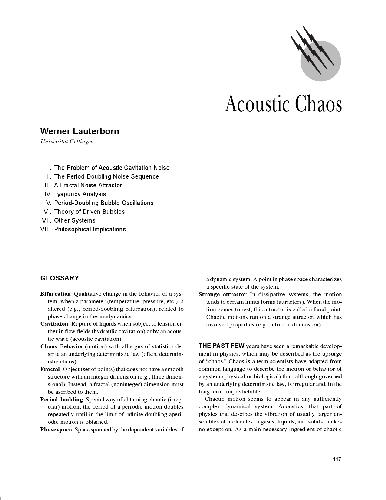
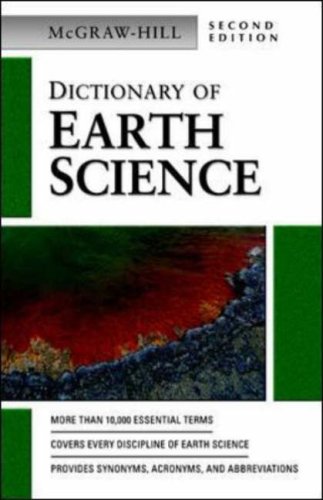
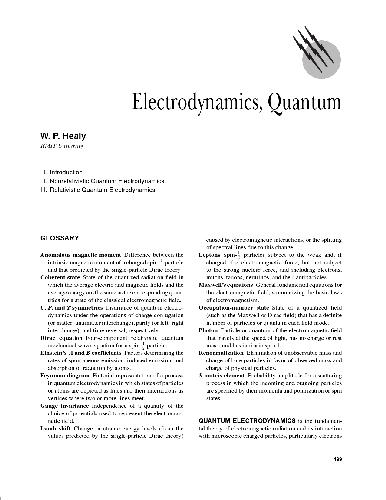


Reviews
There are no reviews yet.